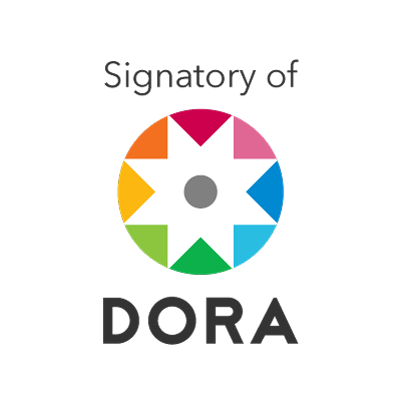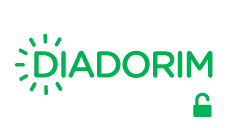Educação em segurança digital
estudo bibliométrico sobre cyberbullying na web of science
DOI:
https://doi.org/10.35699/1983-3652.2020.25110Palavras-chave:
Cyberbullying, Investigação educacional, BibliometriaResumo
A forma como a sociedade se comunica hoje mudou e isso também afeta a educação. As Tecnologias da Informação e Comunicação (TIC), as redes sociais e os diversos dispositivos multimídia desempenham um papel fundamental no campo educacional; porém, esse uso nem sempre traz benefícios, estando o cyberbullying entre as possíveis desvantagens. Esta pesquisa tem como objetivo analisar a situação da produção científica na base de dados Web of Science sobre cyberbullying. Em termos metodológico, realiza-se um estudo bibliométrico para se analisar o desenvolvimento estrutural e dinâmico do termo de estudo. Os resultados refletem que a produção científica sobre o assunto é escassa e irregular, sendo a maioria dos textos científicos artigos e o inglês o idioma principal. Conclui-se que o tema preconiza principalmente intervenção e prevenção.
Downloads
Referências
ANDERSSON, C.; ANTELIUS, J.; MÅNSSON, J.; SUND, K. Technical efficiency and productivity for higher education institutions in Sweden. Scandinavian journal of educational research, v. 61, n. 2, p. 205-223, 2017.
AZNAR-DÍAZ, I.; KOPECKY, K.; ROMERO, J. M.; CÁCERES, M. P.; TRUJILLO-TORRES, J. M. Patologías asociadas al uso problemático de Internet. Una revisión sistemática y meta-análisis en WOS y Scopus. Revista Bibliotecológica: archivonomía, bibliotecología e información, v. 34, n. 82, p. 229-253, 2019.
BEER, P.; HAWKINS, C.; HEWITSON, D.; HALLETT, F. Perpetrators, victims, bystanders and upstanders: cyberbullying in a special school context. Support for Learning, v. 34 n. 3, p. 340-356, 2019.
CEREZO, F.; RUBIO, F.J. Medidas relativas al acoso escolar y ciberacoso en la normativa autonómica española. Un estudio comparativo. Revista Electrónica Interuniversitaria de Formación del Profesorado, v. 20, n. 1, p. 113, 2017. https://doi.org/10.6018/reifop/20.1.253391
COBO, M. J.; LÓPEZ‐HERRERA, A. G.; HERRERA‐VIEDMA, E.; HERRERA, F. Science mapping software tools: Review, analysis, and cooperative study among tools. Journal of the American Society for information Science and Technology, v. 62, n. 7, p. 1382-1402, 2011. https://doi.org/10.1002/asi.21525
COBO, M. J.; LÓPEZ‐HERRERA, A. G.; HERRERA‐VIEDMA, E.; HERRERA, F. SciMAT: A new science mapping analysis software tool. Journal of the American Society for Information Science and Technology, v. 63, n. 8, p. 1609-1630, 2012. https://doi.org/10.1002/asi.22688
COOPER, K.; QUAYLE, E.; JONSSON, L.; SVEDIN, C. G. Adolescents and self-taken sexual images: A review of the literature. Computers in human behavior, v. 55, p. 706-716, 2016.
DEL REY, R.; MORA-MECHÁN, J.: CASAS, J.: ORTEGA-RUIZ, R.; ELIPE, P. Programa «Asegúrate»: Efectos en ciberagresión y sus factores de riesgo. Comunicar, v. 56, n. 3, p. 39-48, 2018.
ENRIQUEZ-VILLOTA, M. F.; GARZÓN-VELASQUEZ, F. El acoso escolar. Saber, Ciencia y Libertad, v. 10, n. 1, p. 219-233, 2015. http://dx.doi.org/10.22525/sabcliber.2015v10n1.219234
ESTÉVEZ, E.; JIMÉNEZ, T. I.; MORENO, D. Aggressive behavior in adolescence as a predictor of personal, family, and school adjustment problems. Psicothema, v. 30, n. 1, p. 66-73, 2018.
FUENTES-CABRERA, A.; MORENO-GUERRERO, A. J.; POZO-SÁNCHEZ, J. S.; RODRÍGUEZ-GARCÍA, A. M. Bullying among Teens: Are Ethnicity and Race Risk Factors for Victimization? A Bibliometric Research. Education Sciences, v. 9, n. 3, p. 220, 2019. https://doi.org/10.3390/educsci9030220
GARAIGORDOBIL, M.; MARTÍNEZ-VALDERREY, V. Efecto del Cyberprogram 2.0 sobre la reducción de la victimización y la mejora de la competencia social en la adolescencia. Revista de Psicodidáctica, v. 19, n. 2, p. 289-305, 2014.
GÓMEZ-GARCÍA, G.; RODRÍGUEZ-JIMÉNEZ, C.; RAMOS, M. Virtual Reality in Physical Education area. Journal of Sport and Health Research, v. 11, n. Supl 1, p. 177-186, 2019.
GONZALEZ CALATAYUD, V.; PRENDES ESPINOSA, M. P. Cyberbullies: A quantitative research with secondary students. PIXEL-BIT-REVISTA DE MEDIOS Y EDUCACION, n. 53, p. 137-149, 2018.
HINOJO-LUCENA, F. J.; DÚO-TERRÓN, P.; RAMOS, M.; RODRÍGUEZ-JIMÉNEZ, C.; MORENO-GUERRERO, A. J. Scientific Performance and Mapping of the Term STEM in Education on the Web of Science. Sustainability, v. 12, n. 6, p. 1-20, 2020.
HIRSCH ADLER, A. Construcción de una escala de actitudes sobre ética profesional. Revista electrónica de investigación educativa, v. 7, n. 1, p. 01-14, 2005.
HO, S. S.; CHEN, L.; NG, A. P. Comparing cyberbullying perpetration on social media between primary and secondary school students. Computers & Education, v. 109, p. 74-84, 2017. https://doi.org/10.1016/j.compedu.2017.02.004
JIMÉNEZ, R. Multiple Victimization (Bullying and Cyberbullying) in Primary Education in Spain from a Gender Perspective. Multidisciplinary Journal of Educational Research, v. 9, n. 2, p. 169-193, 2019. http://dx.doi.org/10.17583/remie.2019.4272
KOKKINOS, C. M., ANTONIADOU, N., Y MARKOS, A. Cyber-bullying: An investigation of the psychological profile of university student participants. Journal of Applied Developmental Psychology, v. 35, n. 3, p. 204-214, 2014. https://doi.org/10.1016/j.appdev.2014.04.001
LANDAZABAL, M. G.; LARRAIN, E. Acoso y ciberacoso en adolescentes LGTB: Prevalencia y efectos en la salud mental. Comunicar: Revista científica iberoamericana de comunicación y educación, n. 62, p. 79-90, 2020.
LÓPEZ-ROBLES, J. R.; GUALLAR, J.; OTEGI-OLASO, J. R.; GAMBOA-ROSALES, N. K. El profesional de la información (EPI): bibliometric and thematic analysis (2006-2017). El profesional de la información, v. 28, n. 4, p. e280417, 2019. https://doi.org/10.3145/epi.2019.jul.17
MARÍN-MARÍN, J. A.; LÓPEZ-BELMONTE, J.; FERNÁNDEZ-CAMPOY, J. M.; ROMERO-RODRÍGUEZ, J. M. Big Data in Education. A Bibliometric Review. Social Sciences, v. 8, n. 8, p. 223, 2019. https://doi.org/10.3390/socsci8080223
MCLOUGHLIN, L. T.; SPEARS, B. A.; TADDEO, C. M.; HERMENS, D. F. Remaining connected in the face of cyberbullying: Why social connectedness is important for mental health. Psychology in the Schools, v. 56, n. 6, p. 945-958, 2019. https://doi.org/10.1002/pits.22232
MÉNDEZ-MATEO, I.; RUIZ-ESTEBAN, C.; PEDRO-MARTINEZ, J.; CEREZO, F. Cyberbullying according to sociodemographic and academic characteristics among university students. Revista Española de Pedagogía, v. 77, n. 273, p. 261-276, 2019.
MENESINI, E.; SALMIVALLI, C. Bullying in schools: The state of knowledge and effective interventions. Psychology, Health & Medicine, v. 22, n. sup1, p. 240-253, 2017.
MINISTERIOS DE EDUCACIÓN, CULTURA Y DEPORTE. Plan Estratégico de Convivencia Escolar. 2016.
MISHNA, F.; COOK, C.; GADALLA, T.; DACIUK, J.; Y SOLOMON, S. Cyber bullying behaviors among middle and high school students. American Journal of Orthopsychiatry, v. 80, n. 3, p. 362-374, 2010.
MONTIEL, I.; AGUSTINA, J. R. Educational challenges of emerging risks in cyberspace: foundations of an appropriate strategy for preventing online child victimisation. REVISTA ESPANOLA DE PEDAGOGIA, v. 77, n. 273, p. 277-294, 2019.
MORENO-GUERRERO, A. J. Estudio bibliométrico de la producción científica en Web of Science: Formación Profesional y blended learning. Píxel-Bit. Revista de Medios y Educación, n. 56, p. 149-168, 2019.
NOCENTINI, A.; CALMAESTRA, J.; SCHULTZE-KRUMBHOLZ, A.; SCHEITHAUER, H.; ORTEGA, R.; MENESINI, E. Cyberbullying: Labels, behaviours and definition in three European countries. Journal of Psychologists and Counsellors in Schools, v. 20, n. 2, p. 129-142, 2010.
O'CONNOR, K.; DROUIN, M.; DAVIS, J.; THOMPSON, H. Cyberbullying, revenge porn and the mid‐sized university: Victim characteristics, prevalence and students' knowledge of university policy and reporting procedures. Higher Education Quarterly, v. 72, n. 4, p. 344-359, 2018. https://doi.org/10.1111/hequ.12171
OLWEUS, D. Bullying at school: What we know and what we can do. Oxford: Blackwell, 1993.
OLWEUS, D.; LIMBER, S. P. Olweus bullying prevention program. En: The Handbook of Bullying in Schools: An International Perspective. Nueva York: Routledge, 1983. p. 37-401.
ORTEGA-RUIZ, R.; ZYCH, I. La ciberconducta y la psicología educativa: retos y riesgos. Psicología Educativa, v. 22, n. 1, p. 1-4, 2016. http://doi.org/10.1016/j.pse.2016.04.001
PABIAN, S.; VANDEBOSCH, H. An investigation of short-term longitudinal associations between social anxiety and victimization and perpetration of traditional bullying and cyberbullying. Journal of youth and adolescence, v. 45, n. 2, p. 328-339, 2016.
REIJNTJES, A.; VERMANDE, M.; THOMAES, S.; GOOSSENS, F.; OLTHOF, T.; ALEVA, L.; VAN DER MEULEN, M. Narcissism, bullying, and social dominance in youth: A longitudinal analysis. Journal of Abnormal Child Psychology, v. 44, p. 63-74, 2016.
RODRÍGUEZ-GARCÍA, A. M.; FERNÁNDEZ, M. A.; MORENO-GUERRERO, A. J. Evolución científica de lenguas en el contexto universitario (1900-2019). Texto Livre: Linguagem e Tecnologia, v. 12, n. 2, p. 16-36, 2019.
RODRÍGUEZ-GARCÍA, A. M.; TRUJILLO, J. M.; SÁNCHEZ, J. Impacto de la productividad científica sobre competencia digital de los futuros docentes: aproximación bibliométrica en Scopus y Web of Science. Revista Complutense de Educación, v. 30, n. 2, p. 626-646, 2019.
RUBIO-HERNÁNDEZ, F. J.; DIAZ-LÓPEZ, A.; CEREZO-RAMÍREZ, F. Bullying and cyberbullying: The answer of the autonomous communities. Revista Electrónica Interuniversitaria de Formación del Profesorado, v. 22, n. 1, p. 145-157, 2019.
RUIZ-PALMERO, J.; SÁNCHEZ-RODRÍGUEZ, J.; TRUJILLO-TORRES, J. M. Utilización de internet y dependencia a teléfonos móviles en adolescentes. Revista Latinoamericana de Ciencias Sociales, niñez y juventud, v. 14, n. 2, p. 1357-1370, 2016.
SÁNCHEZ-LACASA, C.; CEREZO-RAMÍREZ, F. Consecuencias psicológicas, sociales y académicas del ciberbullying: una revisión teórica. En: GÁZQUEZ, J. J.; MOLERO, M. M.; PÉREZ-FUENTES, M. C.; MARTOS, A.; SIMÓN, M. M.; BARRAGÁN, A. B.; SISTO, M. (eds.), La convivencia Escolar: Un Acercamiento Multidisciplinar. Almería, España: ASUNIVEP, 2018. p. 19-24.
SARWAR, B.; ZULFIQAR, S.; AZIZ, S.; EJAZ CHANDIA, K. Usage of social media tools for collaborative learning: The effect on learning success with the moderating role of cyberbullying. Journal of Educational Computing Research, v. 57, n. 1, p. 246-279, 2019. https://doi.org/10.1177/0735633117748415
SMITH, P. K. Understanding school bullying: Its nature and prevention strategies. London: Sage, 2014.
SWEARER, S. M.; HYMEL, S. Understanding the psychology of bullying: Moving toward a social-ecological diathesis-stress model. American Psychologist, v. 70, p. 344-353, 2015.
SWEET, K. S., LEBLANC, J. K., STOUGH, L. M., Y SWEANY, N. W. Community building and knowledge sharing by individuals with disabilities using social media. Journal of Computer Assisted Learning, v. 36, n. 1, p. 1-11, 2020. DOI: https://doi.org/10.1111/jcal.12377
THOMAS, H. J.; SCOTT, J. G.; COATES, J. M.; CONNOR, J. P. Development and validation of the Bullying and Cyberbullying Scale for Adolescents: A multi‐dimensional measurement model. British Journal of Educational Psychology, v. 89, n. 1, p. 75-94, 2019. https://doi.org/10.1111/bjep.12223
TOMCZYK, Ł. What Do Teachers Know About Digital Safety? Computers in the Schools, v. 36, n. 3, p. 167-187, 2019. https://doi.org/10.1080/07380569.2019.1642728
WAASDORP, T. E.; BRADSHAW, C. P. The overlap between cyberbullying and traditional bullying. Journal of Adolescent Health, v. 56, n. 5, p. 483-488, 2015.
Downloads
Publicado
Edição
Seção
Licença

Este trabalho está licenciado sob uma licença Creative Commons Attribution 4.0 International License.
Este é um artigo em acesso aberto que permite o uso irrestrito, a distribuição e reprodução em qualquer meio desde que o artigo original seja devidamente citado.











